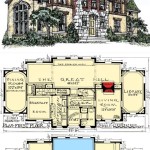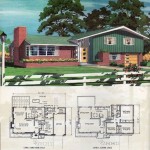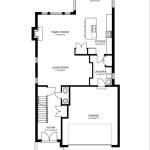Essential Aspects of Frank Lloyd Wright Usonian Floor Plans
Frank Lloyd Wright's Usonian houses were a revolutionary concept in American architecture. Designed to be affordable and accessible to the average family, these homes emphasized simplicity, functionality, and organic integration with the surrounding landscape.
Design Principles
Usonian floor plans adhered to several key design principles:
- Open and Flowing Space: Rooms were connected with wide openings and low walls, creating a continuous flow of space.
- Compact and Efficient: Houses were designed to minimize wasted space, with compact plans that maximized functionality.
- Emphasis on Nature: Large windows and outdoor spaces brought the surrounding environment into the home.
Spatial Organization
Usonian houses were typically organized around a central living area, with bedrooms and other spaces radiating outward. This design allowed for privacy while maintaining a sense of connection.
Living areas were often open and spacious, with large windows and a fireplace. Dining areas were integrated into the living space, blurring the lines between different functions.
Materials and Construction
Usonian houses were built using affordable materials such as concrete blocks, wood, and brick. Wright experimented with prefabrication techniques to reduce construction costs.
Exposed structural elements, such as beams and columns, became integral design features. This showcased the honesty and simplicity of the materials.
Sustainable Design
Wright believed in sustainability long before it became a popular concept. Usonian houses were energy-efficient, with features such as passive solar heating and natural ventilation.
The use of locally sourced materials and the integration of the building into the landscape minimized environmental impact.
Integration with Nature
Wright designed Usonian houses to harmonize with their surroundings. Ample windows and outdoor spaces blurred the boundaries between the interior and exterior.
Terraces, balconies, and patios extended the living spaces outdoors, creating a seamless transition between the built and natural environments.
Legacy and Impact
Frank Lloyd Wright's Usonian floor plans left a lasting impact on American architecture. They demonstrated that affordable housing could also be stylish, functional, and environmentally responsible.
The principles of Usonian design continue to inspire contemporary architects, who seek to create homes that embody the same ideals of simplicity, affordability, and connection with nature.

Frank Lloyd Wright Usonian Design

Frank Lloyd Wright S Usonian Homes N Design Review

Usonian Floorplan Frank Lloyd Wright Homes House

Frank Lloyd Wright S Usonian Houses House Homes

Not Pc Rosenbaum Floor Plan Frank Lloyd Wright

Three Frank Lloyd Wright Unbuilt Houses Brought To Life As Digital Reconstructions

Solaripedia Green Architecture Building Projects In

Usonian House Frank Lloyd Wright Lakeland Fl Resources

Frank Lloyd Wright Usonian Houses A Look At The Rosenbaum House

Usonian Standard Detail Sheets Page 3 Wright








